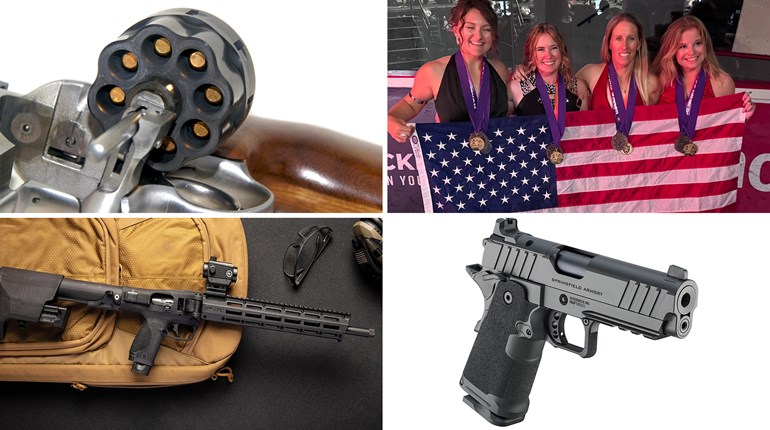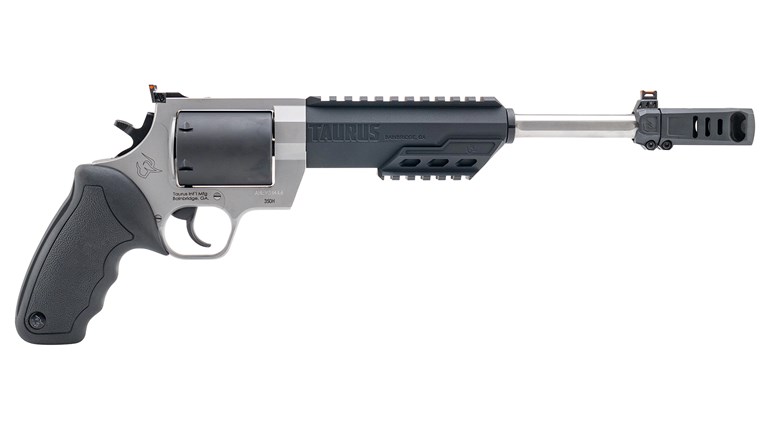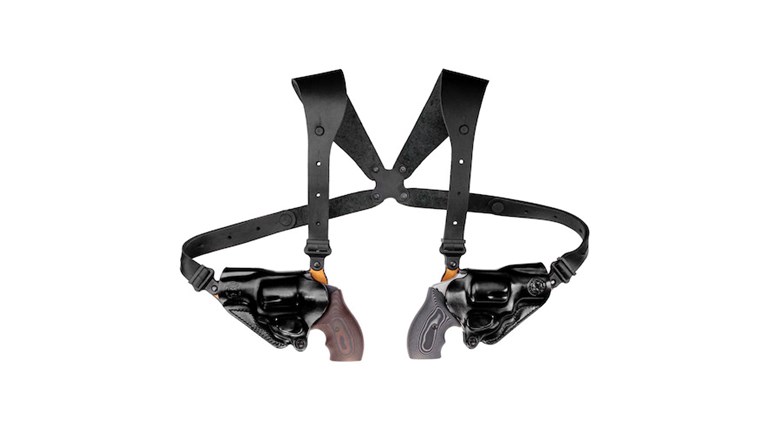
We know in personal-defense situations that fine motor skills, such as grasping or manipulating objects, can deteriorate as the brain goes into rapid response when danger is detected. Signals are sent to the amygdala, where emotions get processed. When an imminent crisis is sensed, the amygdala fires a signal off to the hypothalamus, the brain's command center. With alerts sent through the nervous system, the adrenal glands get notice to manufacture adrenaline most "ricky-tic." The good comes with the bad. You gain the ability to move quicker, sense things faster, but from this, the body tries to speed up resolution.
Here is where the trouble can occur. I say "can" for a reason. Much like "stopping power," use of the term "muscle memory" has become one of derision, with the "experts" claiming that there is no such thing, which is not true. "Muscle memory" is the layman's term for procedural memory. This is part of the mind's long-term memory that stores the ability for knowing how to do things. Hence, the more practiced or studious you are at something, the more capable you are at practicing that skill.
Of course, the opposite is true. Skills not learned or those gone unpracticed are not committed to the procedural memory process.
Without question, in the terms of a rapid reload, the semi-automatic pistol wins in the timed event. Yet there is the false notion that follows behind this that goes something like this: "Since the self-loading pistol is capable of the faster reload, then by default, the revolver can not be possibly reloaded during a gun fight."

Having run my fair share of revolver-reloading techniques, I will be honest in saying that I have never found much favor with using speed loaders paired with the five-shot, J-Frame revolver. At least not with hollowpoints. While round-nose target ammo, hard-ball or semi-wadcutters will, in my experience, find their way home, the ogive profile of a single hollowpoint can end up grabbing the top of the cylinder wall, thus preventing good alignment of the cartridge and stopping all rounds in the speedloader from dropping in cleanly. Because of that, like most other folks who carry a snubnose revolver, the speed strip is my go-to reload. But there is another option.
The .38 Special wadcutter has been around a long time, since the 1960s and 1970s when hollowpoint handgun ammunition was less than ideal. The anemic 148-grain target round was subjected to healthy doses of pistol powder to be turned into a hole-punching defense round. It was the ideal round of the time for one of the 20th century's most legendary gun-fighters: Jim Cirillo.
Then came the modern era. With it, the wadcutter was largely regulated to handloaders and "quaint" history. However, there are still two factory loadings directed at personal defense, each of them unique in their design.
Tim Sundles' Buffalo Bore Ammunition offers a standard pressure, hard-cast, 150-grain wadcutter in .38 Special for use in short-barreled snubnose revolvers. It does what it is designed to do, which is create an efficient wound channel, forwards and back. The beauty of this particular load is that it's well-suited for defense against both two- and four-legged predators.
Federal Premium went the opposite route. The company's HST load for the .38 Special is 20 grains lighter, copper-jacketed and a hollowpoint. The 130-grain JHP is then kicked up to a +P rating to drive the extremely wide mouthed bullet faster so that it gains good expansion with sufficient penetration.

On a trail run a couple of years ago, I began wondering how one would contend with a personal-defense situation where one might be forced to use a pistol defensively, only to be further put into a predicament where the firearm would need to be reloaded possibly more than once. Stowed inside my Hill People Gear chest rig, was a snubnose .38 Special revolver along with two speed strips loaded with Buffalo Bore's previously mentioned wadcutter loads, a small water flask, a granola bar or two, an ESEE Izulu II knife and a first-aid kit.
Remembering how .38 Special wadcutters will fit into a 1911 magazine, I couldn't help but think that in a situation where you would have to draw a firearm and then reload it, it would be far easier for your hand to locate a full-size magazine and yank it out versus desperately finger-searching for a speed strip. Back at home, I pulled out an old, unused Colt 1911 magazine and fed both the Buffalo Bore and Federal HST loads into the mag, working through a new reloading technique.
The wadcutter cartridge in .38 Special bears a very unique characteristic in that it can be loaded into an unmodified 1911 magazine, being only slightly shorter than a .45 ACP round. Somewhere in the previous century, some old Bullseye shooter figured this out, and the top gunsmiths of the era began reworking 1911s into dedicated .38 Special / wadcutter-only target pistols. Smith & Wesson even produced a few factory models in this configuration. If a self-loading pistol could be reconfigured to feed the flat-faced cartridge, then it stood to reason a revolver, single- or double-action, could be as well.
Recently, I ordered a couple of 10-round Railed Power Mags from CMC Products for a 1911 (.45 ACP), in order to give myself a couple of advantages in this particular reloading technique. The magazines are capable of holding 10 .38 Special wadcutters, thus allowing me to carry two full sets of reloads for a five-shot J-frame inside of a single magazine. The elongated mag also allows for a full and positive grip that fills the weak hand, unlike a speedloader or a speed strip, which only fills a user's fingers. These require finite use of one's motor skills under stress. The magazine-based reload uses minimal dexterity, with the round being pushed into the cylinder one at a time using only the pad of the thumb to index the wadcutter. The rest of the hand keeps a rudimentary grip on the mag.

In order to avoid confusing these magazines with those that used for my 1911s, I made a simple Kydex band to put around it. A hole drilled through a tab allowed for a simple wrist lanyard to be added as well, thus needlessly preventing the magazine from being dropped or, discarded.
A practice drill, for instance, might look like this:
Five shots are fired onto the target with the revolver, the empties in the cylinder are ejected with a firm stroke of the ejector rod. The magazine is retrieved from cover, with the lanyard slipping over the wrist or fingers during the draw. The cylinder is reloaded, closed, then brought back into the firing position and on target. The now partially loaded magazine is either allowed to dangle from the weak-hand wrist, stowed into a pocket or waist band until it is required again.
In a worst-case scenario, where the magazine is dropped to the ground, a shiny, stainless-steel 1911 magazine is going to require less searching by eyes or hands in low-light circumstances, as opposed to trying to locate a dropped speedloader or spare speed strip. Should things get up close and unfriendly during an attack, the extended magazine can be pressed into use as an emergency impact weapon.

The only flaw I discovered in working through this process was not one that was consistent from magazine to magazine, but it did occur. In some instances, a cartridge might stovepipe at the top of the mag. This issue was simply remedied with a slight pinch on the feed lips from a pair of channel-lock pliers, crimping the top of the magazine slightly. Since these magazines are dedicated for this particular usage, they do not get mixed in with my other 1911 mags.
Clearly, this is not a one-size-fits-all reloading technique. Nor is it intended to be. Given the magazine's easy retrieval from a kit bag, 1911 magazine carrier or a jacket pocket, it may well fit the bill for some shooters.
Someone might want to apologize to the guy in the meme holding onto the Smith & Wesson 640 revolver with the extended magazine underneath. It turns out you can reload a snubnose .38 Special revolver with magazines.





































